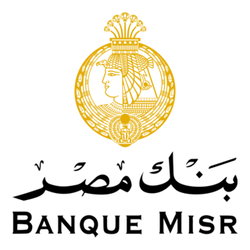The Valley of the Kings tour takes you to an ancient Egyptian road that was secret. It is where the workers were taken blindfolded, known only for the kings, priests, and close nobles to the palace.
It arrives you at the royal tombs in the Ma’at, the land of truth. That were shiny by worthwhile treasures, and vivid inscriptions take you to the heart of the ancient Egyptians’ afterlife beliefs.
Some of these inscriptions were from the Book of Dead, the Book of Amduat, the Opening of the Mouth, and the Book of the Holy Cow.
The mummies were located in these treasured tombs. Now, you can see a mummy of one of the most important kings in his tomb, Tutankhamun.
Once arriving, you will be amid the 18th Dynasty of Ancient Egypt, around the 16th century BCE, up to the 19th Dynasty, c. 1188–1186 BCE. The site includes over 60 royal tombs. It was used as a royal burial site for nearly 500 years.
Why, and how were these tombs carved on this site?!
Why Did the Ancient Egyptians Choose This Spot to Be Redeemed by the Royal Tombs?
The Valley of the Kings is the last stage of the royal tombs. The tombs of the kings start with a hole dug under ground, then to a mastaba, and after that a pyramid.
But the pyramid is a huge building that takes a big size, plus it is a known spot for the whole people, and therefore, in the era of decline, these pyramidal royal tombs were completely looted, which made the kings of the New Dynasty refuse to do pyramids, as the pharaohs believed in eternity.
That is why they wanted to establish hidden tombs far away from the people to keep the thief’s out of them, keeping the funeral royal items safe.
Hence, Thutmose I ordered Inini to make for him a tomb in a pyramid shape to facilitate the tour of the king’s soul to the sky. At the same time, make this tomb far away from the eyes of the people, serving the idea of eternity.
The Arrival at the Valley of the Kings
After the deep search, Inini arrived at the Valley of the Kings. The mountains of this area take on a pyramidal shape. Also, this spot surrounds the mountains from everywhere.
That makes this spot completely secured. The third point is that it is not raining. So, the tomb would be dry all the time, and the fourth and most important benefit of this site is that the stones there are soft limestone. That facilitated the digging mission.
So, the first king to carve a tomb in the Valley of the Kings was Thutmose I, the father of Hatshepsute. This tomb was done by his archetict Inini.
Then, the pharaohs continued to build royal tombs until they reached about 62 royal tombs, including Ramses V, Ramses V1, Tutankhamun, and Seti I.
Uncover the mysteries of who had carved these outstanding tombs, how much time did it take to dug just one tomb, and how many workers did dug these tombs? Explore great unique and valuable facts about the Valley of the Kings.
How the Royal Tombs Were Carved in the Valley of the Kings?!
Those creative people were not ordinary, as they had prepared these dazzling tombs that are not ordinary graves, but they were the place of infinity in the truth world for the kings to be gods in the afterlife world.
Hence, the kings keened on these tombs, and carving their tombs was at the moment of getting the throne up to the day of the 70th death, since it was the period of the mummification process.
On the 70th day, once the king was buried, the cemetery had never been opened.
The workers of the royal tombs were numbering 700 workers, divided into 3 groups; the first, are those muscled builders who carved the valley, creating tombs on one axis, L-shaped tombs, and very deep tombs, like the Benen Ptah tomb at a depth of 180 meters underground.
Explore the Facts about the Valley of the Kings
The depths of these tombs vary in height and depth, starting from 3–4 meters in length, or from 30 to 60 meters in length as KV2 (Rameses IV) with 44 meters long, or like; KV17 (Seti I), which is at 137 meters; and KV5 (Rameses II’s sons) is the largest in area, with over 130 chambers and corridors.
So, they created these tombs with the stairs, 3 corridors, chambers, besides the pillar room. The other second group began to plaster the walls, and the third group was for making the inscriptions that you can see till now, reflecting religious and afterlife world beliefs of the ancient Egyptians.
These inscriptions include The Amduat (“Book of That Which Is in the Underworld”), The Book of Gates, The Book of Caverns, The Book of the Dead, The Book of the Night & The Book of the Day, Pyramid Texts & Coffin Texts (Earlier Influence), etc.

Book this unforgettable 13 Day Egypt Tour Cairo, Alexandria, Luxor, Abydos, Aswan and Abu Simbel, and embark on a journey...
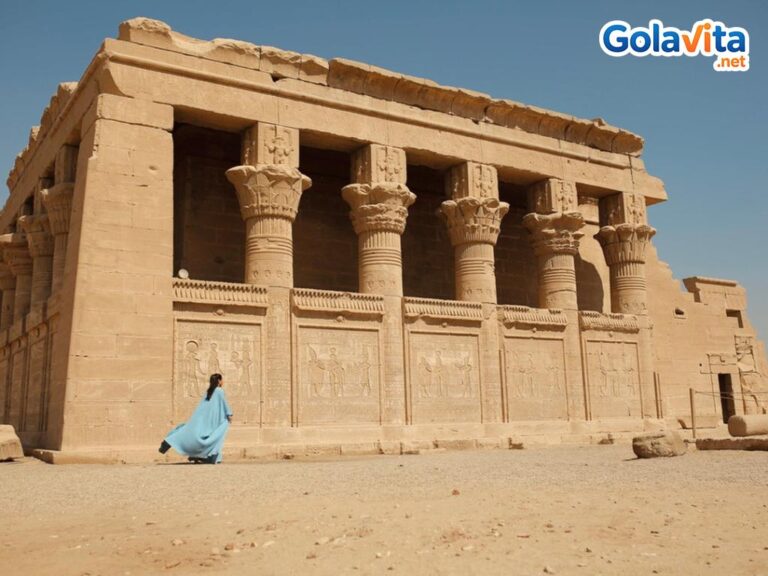
Discover ancient wonders in this unforgettable 3-Day Tour Package. Luxor, Dendera, and Abydos Package—an unforgettable experience starting from the "world’s...
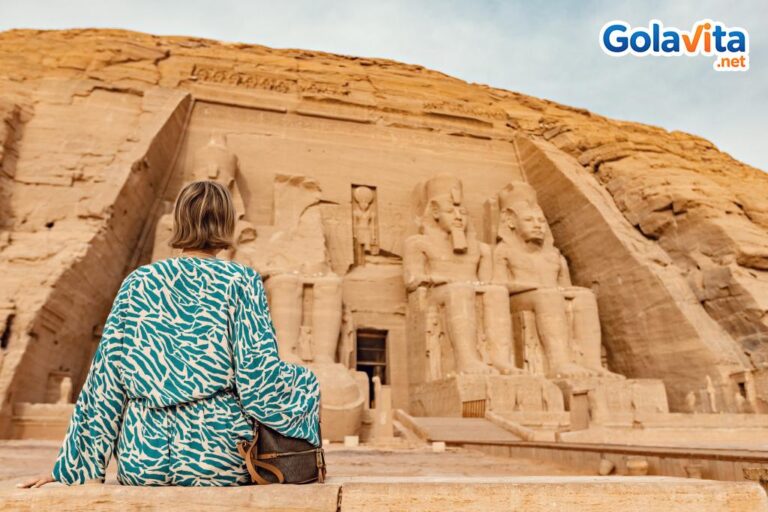
This expertly crafted 6 Day Egypt trip Cairo, Luxor, Edfu, Kom Ombo, Aswan and Abu Simbel takes you on an...
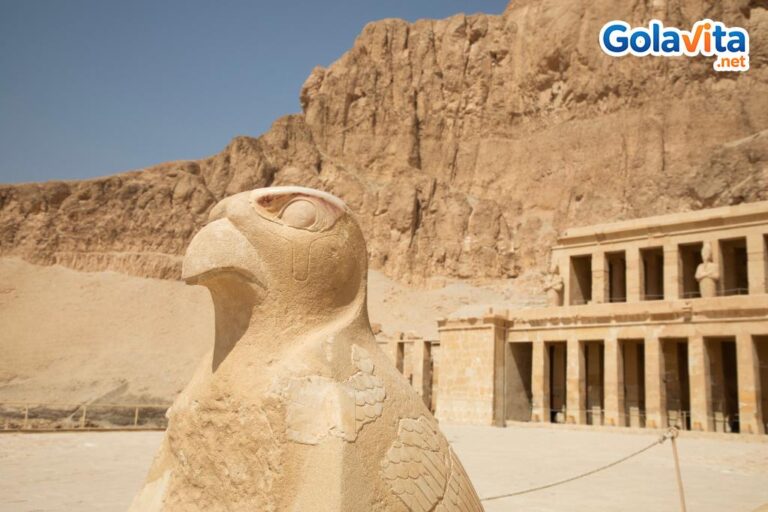
Our meticulously crafted "Egypt Itinerary 6 Day Cairo Luxor and Hurghada" package promises an unforgettable blend of unveiling ancient wonders...
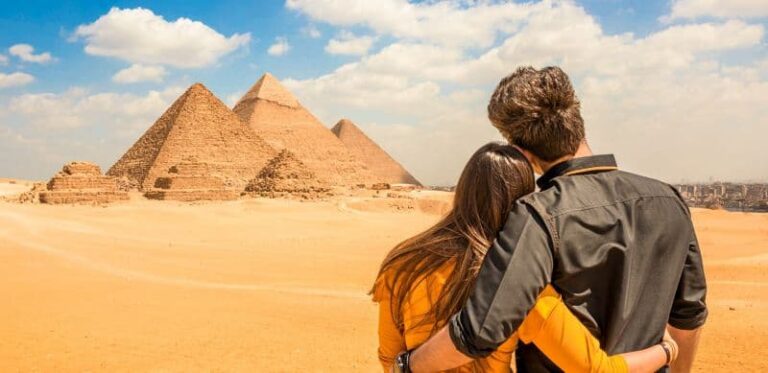
Do not miss this 5-Day Egypt Tour Package Cairo & Nile Cruise from Aswan to Luxor that blends the majesty...

The Farah Nile Cruise from Aswan to Luxor in 4 Days with Golavita means sailing on board one of the...

Book this Esmeralda Nile Cruise—5 days from Luxor to Aswan— and enjoy seamlessly sailing amid lush Nile banks that meet...

Noor Eldin Dahabiya Nile Cruise 5 Days Luxor to Aswan tour with Golavita for competitive pricing due to exclusive offers...

Join the Noor El Din Dahabiya Nile Cruise for 4 days from Aswan to Luxor at a competitive price offered...

Pyramids Dahabiya The 5-Day Nile Cruise from Luxor to Aswan is a wonderful choice for embarking on a sailing journey...

Book the Pyramids Dahabiya Nile Cruise 4 Days Aswan to Luxor tour for historical exploration with a relaxed and luxurious...
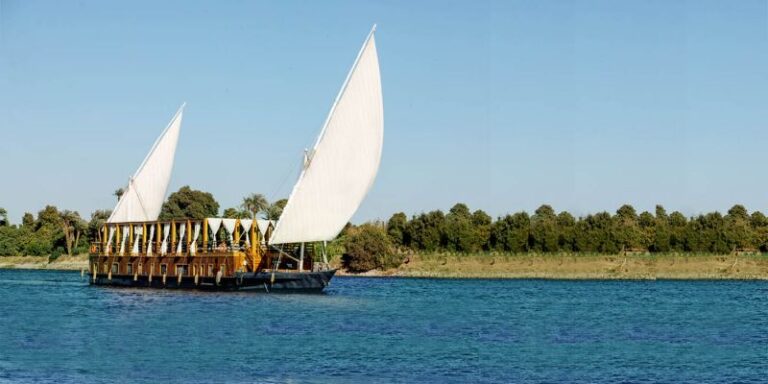
Join this deluxe Hathor Dahabiya Nile Cruise: 5 Days Luxor to Aswan Tour with premium accommodation, fine dining, high-class facilities...

Experience the timeless charm of ancient Egypt aboard a luxurious Dahabiya, and embark amid the majesty of Luxor and Aswan...

Monica Nile Cruise—5 Days from Luxor to Aswan tour takes you to set sail on board a 5-star Nile Cruise...
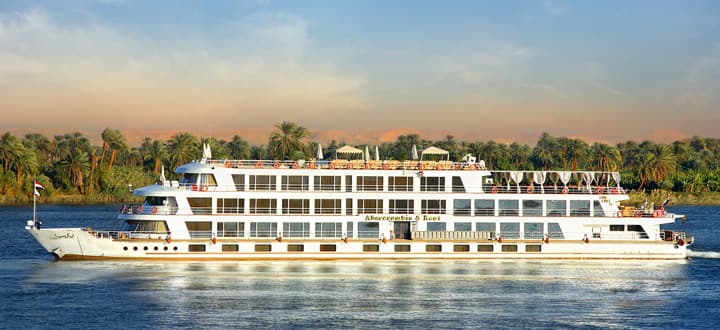
Spending a cruise holiday is a wonderful choice, but joining this Jewel Deluxe Nile Cruise - Luxor to Aswan in...



Important Tombs in the Valley of the Kings
There are 10 tombs opened now out of 62 tomb, including;
- Tomb of King Ramses VII | KV1.
- Tomb of King Ramesses IV | KV2.
- Tomb of King Ramesses XI | KV4.
- Tomb of King Ramesses III | KV11.
- Tomb of King Ramesses I | KV16.
- Tomb of King Ramesses X | KV18.
- The Tomb of Tausret and Setnakht (KV 14).
There are tombs that need an additional charge, which are:
- Tutankhamun tomb | KV62... This tomb was discovered and opened for the first time in 1922, and the explorers found more than 7,000 artifacts and treasures.
- Now, you can still see the Tutankhamun's mummy and his stone sarcophagus. It costs 13.8 dollars by visa, and cash is not accepted.
- Ramses V & Ramses VI KV9... it is where you will be surrounded by the holy books such as the Book of Gates, Book of Caverns, Imyduat, Book of Night, and the Book of Dead. It costs 5.5 dollars by Visa, and cash is not accepted.
- Tomb of Sety I | KV17... it is one of the deepest, longest, and most beautiful tombs in the valley. The tomb is famous for the astronomical views and descriptions, the Litany of Ra, Opening of Mouth, and Book of Gates. It costs 39 dollars by Visa, and cash is not accepted.
The rest of the tombs are within the charge of the main ticket.


